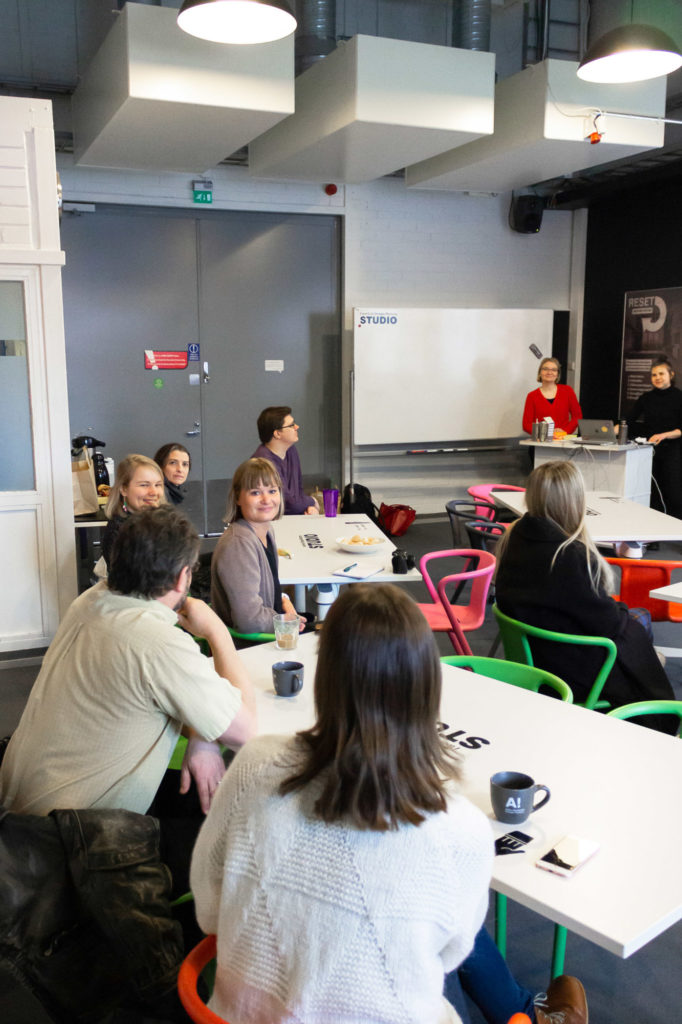For any new product to succeed, customers need to adopt it as part of their consumption habits. Food products represent specific types of consumer products in their high frequency of consumption, physiological function, actual ingestion of the product and socially embedded nature of food-related behavior, all of these adding up to the challenge of new product adoption. How to then enhance customer acceptance of new food products?

(c) Anna-Sofia Juntunen
Consumer acceptance has been shown by research to be one of the most crucial factors in the development of successful food products. However, the mere term ‘customer acceptance’ is somewhat problematic. It can be understood to mean anything from customers’ willingness to try a new product to customers’ willingness to buy a new product – let alone, customers’ willingness to buy the new product repeatedly. Majority of customers are probably willing to try a novelty, at least if it is offered for free, but it gets more challenging to have them integrate something new as part of their everyday diet.
Customers’ motivations to try out a new food product differs from their motivations of repeat consumption. The former include factors like curiosity, rationalized principles such as desire to reduce environmental impact of diet, and following food and beverage trends. The latter, on the other hand, are more rational in nature with factors such as price, taste, availability, and degree of fit with current eating habits.
An additional challenge comes from the socially embedded nature of food-related behavior. Many of our everyday practices such as work, school, care and socializing are connected to food. We cook together, we meet each other over coffee or lunch, we celebrate by enjoying a dinner at a fancy restaurant and we reward ourselves after a workweek with Friday night pizza, ice cream or other delicacies. Therefore, often for an individual customer to accept a new food product, also his or her circle of near and dear have to have accepted it.

(c) Anna-Sofia Juntunen
Another issues to consider is the question of who needs to adopt the new product. Oftentimes the customer group that companies tend to target first is the early majority of Everett Rogers diffusion of innovations curve. However, according to a vast amount of research, the group that should be targeted first are the early adopters – or, in some cases, even the innovators – as some degree of established consumption is a precondition to build greater acceptance upon and as the early adopters are the group of customers from which the early majority learn about novelties.
Research to date has identified several factors that influence customer acceptance and that can roughly be divided into three groups: factors related to the product, factors related to the customer and factors related to the environment. The first group encompasses factors such as price, availability, perceived benefits, perceived risks and naturalness. Of these price and availability can be described as hygiene factors in that there has to be certain level of them for the new food product to be even considered by customers. Regarding benefits and risks, the existence of benefits is more important than the lack of risks. Finally, naturalness of the new product has been found to enhance acceptance in all studies in which it has been included.
The second group of factors consist of individual customer related personal factors such as taste orientation, motivations, attitudes and needs. Household composition is a relational factor influencing customer acceptance as taste orientation, motivations, attitudes and needs of other household participants come to play. Last customer related factor to be highlighted is food neophobia, which describes a customer’s willingness to try out new food. The higher the food neophobia, the less likely a customer is to try out novelties.
The last group of factors consists of factors related to the larger environment and society. These include social trust, cultural norms, and ethical aspects. Social trust has to do with the trustworthiness of the source of information on the new product. Familiar and objective entities such as family and friend in the case of the former and scientific researchers in the case of the latter are seen as most trustworthy sources of information. Cultural norms have to do with what is considered as ‘normal’ and ‘acceptable’ food in the prevailing cultural sphere. The final factor, ethical aspects, has to do with the ethical side of food such as sustainability, way of production, the production chain among other things.

(c) Anna-Sofia Juntunen
How does one then influence these factors? How does one encourage adoption of new food products? Research has identified three strategies for the purpose: sensorial-focused strategy, marketing and education-focused strategy and design-focused strategy. The first one relies on making customers test, taste and experience the new products and by so attempts to make customers more familiar with the novelties. The second strategy aims to provide information both commercial and objective about the new food product and through exposure to this information enhance customer adoption. The last strategy uses design-based interventions to facilitate adoption. Examples of such interventions could be an original package design or an ingenious way of designing the product.
The three strategies aim to target the specific characteristics of food as a product category in enhancing acceptance. However, the strategies are by no means separate, but in many instances overlap, and can be used to together. Educating users on new products is no easy task and, thus, it is good to have different strategies at hand to use.
The photos in this post are from ‘Educating users’ themed workshop organized by the DesignBites research team for our case companies. The purpose of the workshop was to answer questions and challenges of how to educate customers to have them adopt and understand new types of products and ingredients. This post gives an overview of the customer acceptance theory presented at the workshop. An upcoming post will introduce some hands-on tools and methods for working on your own user education issues. Stay tuned!
References:
Bäckström, A., Pirttilä-Backman, A. M., & Tuorila, H. (2004). Willingness to try new foods as predicted by social representations and attitude and trait scales. Appetite, 43(1), 75-83.
House, J. (2016). Consumer acceptance of insect-based foods in the Netherlands: Academic and commercial implications. Appetite, 107, 47-58.
Kauppi, S. M., Pettersen, I. N., & Boks, C. (2019). Consumer acceptance of edible insects and design interventions as adoption strategy. International Journal of Food Design, 4(1), 39-62.
Lensvelt, E. J., & Steenbekkers, L. P. A. (2014). Exploring consumer acceptance of entomophagy: a survey and experiment in Australia and the Netherlands. Ecology of food and nutrition, 53(5), 543-561.
Nazzaro, C., Lerro, M., Stanco, M., & Marotta, G. (2019). Do consumers like food product innovation? An analysis of willingness to pay for innovative food attributes. British Food Journal.
Pascucci, S., & Magistris, T. D. (2013). Information bias condemning radical food innovators? The case of insect-based products in the Netherlands. International Food and Agribusiness Management Review, 16(1030-2016-82947), 1-16.
Perrea, T., Grunert, K. G., & Krystallis, A. (2015). Consumer value perceptions of food products from emerging processing technologies: A cross-cultural exploration. Food Quality and Preference, 39, 95-108.
Ronteltap, A., Van Trijp, J. C. M., Renes, R. J., & Frewer, L. J. (2007). Consumer acceptance of technology-based food innovations: lessons for the future of nutrigenomics. Appetite, 49(1), 1-17.
Siegrist, M. (2008). Factors influencing public acceptance of innovative food technologies and products. Trends in Food Science & Technology, 19(11), 603-608.
Ueland, Ø., Gunnlaugsdottir, H., Holm, F., Kalogeras, N., Leino, O., Luteijn, J. M., … & Tuomisto, J. T. (2012). State of the art in benefit–risk analysis: Consumer perception. Food and Chemical Toxicology, 50(1), 67-76.
Vanhonacker, F., Kühne, B., Gellynck, X., Guerrero, L., Hersleth, M., & Verbeke, W. (2013). Innovations in traditional foods: Impact on perceived traditional character and consumer acceptance. Food research international, 54(2), 1828-1835.
 Aalto DF
Aalto DF